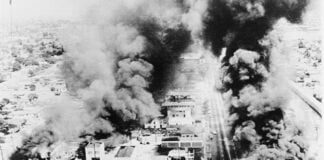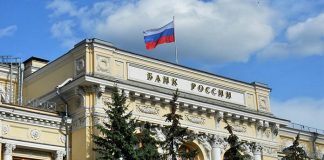Conservative Indigenous leader Noel Pearson uses his new essay Radical Hope to argue for a neo-liberal agenda in Aboriginal education, argues Ernest Price
Noel Pearson, the Howard government’s go-to conservative Indigenous leader, turns his attention to education policy in “Radical Hope”. He argues that, “educational progress is an antecedent condition to overcoming broader social and economic disadvantage.” This notion may be the kind of “radical hope” of the essay’s title, but Pearson’s real agenda is neoliberal reform.
Pearson’s central thesis is that “personal responsibility”, privatisation and a focus on mainstreaming education are the way to improve educational and, in turn, employment outcomes for Indigenous people. Unfortunately for Pearson, all of the evidence suggests that his neoliberal proposals will only further harm education in Indigenous communities.
Understanding the problem
Pearson is right about one thing—there is a significant and systemic gap between the achievement and retention of Indigenous and Non-Indigenous students. Indigenous students routinely perform well below national averages in both remote communities and regional/metropolitan settings (most Indigenous students attend school in the cities).
The data from the 2008 National Assessment Program—Literacy and Numeracy (NAPLAN) testing shows the extent of the gaps between Indigenous and Non-Indigenous students. NAPLAN data has many flaws, but it does illustrate some of the basic gaps in achievement. Take a sample of the data at Years Three and Nine.
At Year Three, 68.3 per cent of Indigenous students achieve at or above the national minimum standard of reading, as compared to 93.5 per cent of non-Indigenous students.
By the time students reach Year Nine 70.7 per cent of Indigenous students achieve at or above the national minimum standard, as compared to 94.2 per cent of Non-Indigenous students. On the writing test it is 59.7 per cent as compared to 88.8 per cent.
In 2007, there was a similar gap in retention rates to Year Twelve.
The reason is not hard to grasp—there is an absolute link between socio-economic status and educational outcomes. Poor and marginalised communities routinely perform lower on educational measures than well-off schools. This is largely because of a lack of resources and, crucially, a lack of input from these communities into the way that the education system is run.
Education unions around the country have been arguing for programs of community consultation in a bid to increase retention rates in Indigenous communities. The unions have highlighted the lack of funding and trained teachers as being the key problems for Indigenous students.
Neoliberal reform frenzy
Pearson’s central argument is that culturally specific education in schools is patronising Indigenous students and means that they do not learn the skills to allow them to compete in the modern economy. Pearson’s answer is the privatisation of education.
Pearson’s icons for educational reform come from the Charter School movement in the United States. These schools are privately run and claim the key to improving educational results (particularly among disadvantaged black or Hispanic students) is to abandon the “restrictive” legislation governing public schools, and to force schools to meet certain standards.
Charter Schools are also free to solicit private funds—including corporate sponsorship. A similar program was established in the United Kingdom under the Blair government, with the formation of Academy Schools.
But in practice only a small number of schools can succeed in raising significant private funding.
In the US, Charter Schools have taken funding and attention away from public schools. Even Pearson acknowledges that this model will only ever benefit a few, at the expense of the majority of people in poor and disadvantaged communities.
Charter schools also rely on a model of teaching originally tried in the “Teach for America” program. Pearson outlines the rationale of this program, which is currently being piloted in Melbourne. It relies on recruiting “outstanding” graduates from prestigious degrees such as law, giving them six weeks training and contracting them to work in schools in disadvantaged communities for two years.
As the US has embraced the Charter Schools model, their ranking in global educational outcomes has been slipping. Australia outperformed the United States in nine out of ten domains tested on the Programme for International Student Assessment (PISA) tests in 2006. Indeed, the general trend for the US on the PISA tests over the last four data collection cycles has been down—and fast. The US has been overtaken by countries such as South Korea and Japan on a number of key domains. Pearson wants us to emulate an education system in crisis.
Pearson emphasises the importance of teacher instruction in improving education for Indigenous people. But the “Teach for America” gimmick points in the opposite direction, being based on a crash course in teaching. Most importantly, it ignores one of the most important factors in Australian disadvantaged and remote communities—teacher numbers and continuity.
A focus on recruiting poorly trained “future leaders” has proved to only exacerbate teacher turn over in the US, with close to 50 per cent of “Teach for America” teachers leaving the system after two years.
Yet there are teaching programs that have been shown to work. Schools that have made efforts to involve members of local Aboriginal communities in the school—as staff, as carers and as decision makers—have had success in improving attendance and outcomes for Aboriginal students.
In the January 2010 issue of Educational Policy, Barbara Kameniar, Alia Imtoual and Debra Bradley examine the approach of a South Australian preschool working with the local Indigenous communities. The school is working to bring community elders into the school and to reach out to the families of its students, inserting the school into the middle of the community. This is having considerable success.
The Queen’s English
Of course it is not just who is teaching Indigenous students that matters—it is what they are taught. In 2008 the Northern Territory Government decreed that the first four hours of every school day must be taught solely in English. This was a bid to phase out bilingual education throughout the Territory.
Pearson argues that education should focus primarily on skill development for the modern workforce—including learning “the Queen’s English”. He employs a crude anti-racism to argue that anyone who contends that education should happen in local Aboriginal languages has no belief in Aboriginal people’s ability to learn English.
Yet the move to make space for Aboriginal languages and cultures in school has helped make school more relevant for students, increased attendance and led to better educational outcomes. The NT Department of Employment, Education and Training (DEET) had previously admitted as much in its own reports.
A 2005 DEET review concluded, “There have been a number of studies, both in the NT and internationally, that provide evidence for the premise that bilingual education programs achieve higher levels of outcomes, including literacy outcomes in the mainstream language, than non-bilingual programs in similar settings.”
Making excuses
One of Pearson’s frequent themes has been that Indigenous people need to “take responsibility” for their lives. In “Radical Hope” he argues that Indigenous parents need to assume responsibility for their children’s education. This is an extension of the arguments that Pearson and the Cape York Institute are famous for—linking welfare payments for parents to their children’s school attendance records.
In “Radical Hope” Pearson applies this individualist logic to education. He argues that “passivity” is the main problem facing Indigenous communities—a euphemism for “laziness”. Even as Pearson outlines the litany of problems facing Indigenous communities (the chief of which, poverty, Pearson glosses over in but a few paragraphs), he seeks to make Indigenous people responsible for finding solutions.
Pearson talks of passivity preventing Indigenous people from “taking advantage of opportunities to get out of poverty”. What he fails to do, at any point in “Radical Hope” is identify exactly what these “opportunities” are. Most remote Indigenous communities lack real job opportunities, as a result of the failure by government to work with local communities to develop sustainable local industries or provide basic services.
The implication, then, is that Indigenous children need to be trained to fit into the mainstream white economy. This vision fits with the Rudd government’s push to close remote communities and force Indigenous people into larger urban centres. Pearson both ends up blaming the victims of dispossession and government neglect for their own problems, and promoting assimilation as the cure.
Real reform
“Fixing” education is, for all the debate, not rocket science. What is needed to lift educational outcomes for all students, not just Indigenous students, is more funding to allow a greater number of teachers, with greater consultation from communities that attend the schools.
Pearson’s model for improving Indigenous education has already been tried in the US and has failed—even on its own terms. His vision for education in Indigenous communities is anything but radical—it is yet another raft of neoliberal reforms. Pearson, Rudd and the rest need to be stopped, and real money put into education, to make it relevant and useful for Indigenous students. That would truly be radical.





